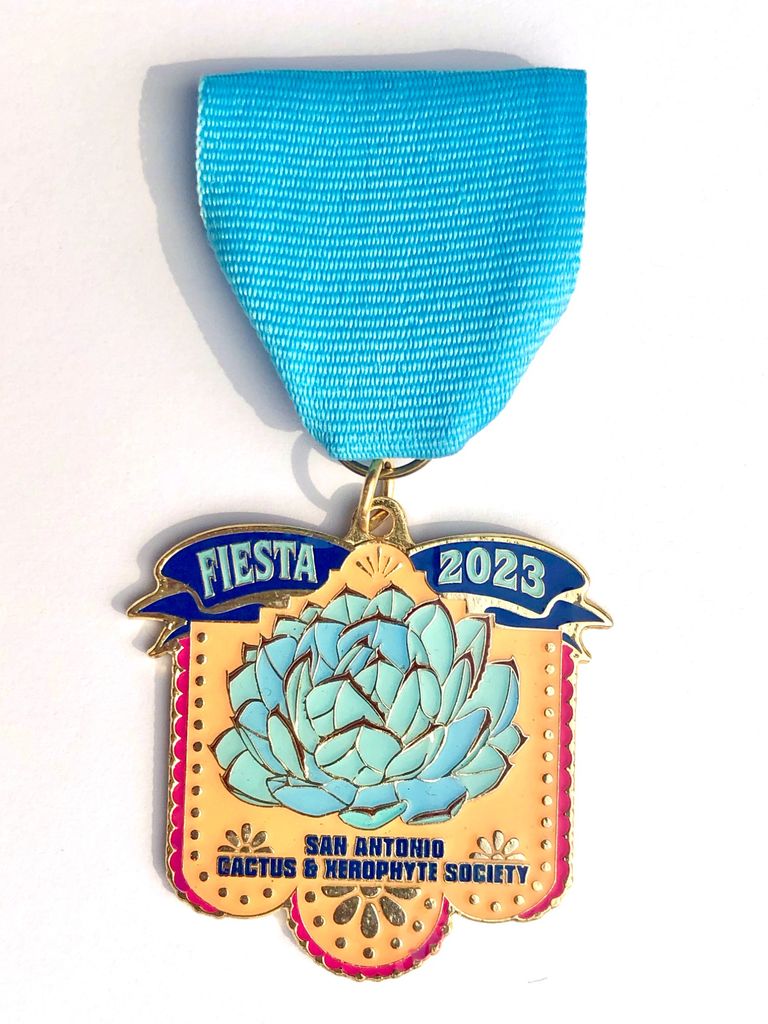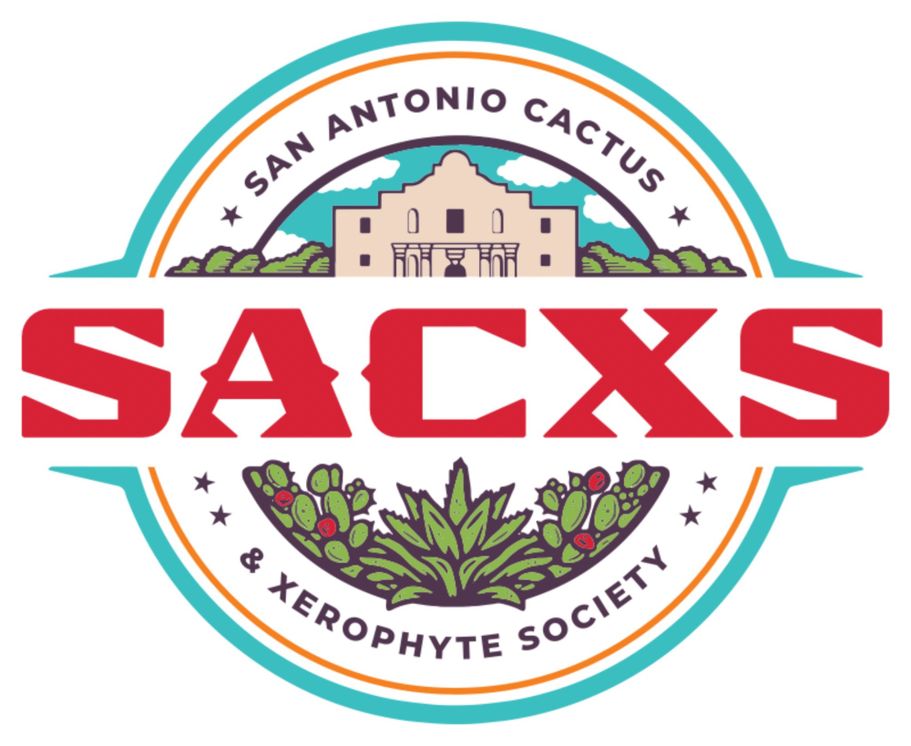

Fiesta 2023 Medal
Embossed on reverse:
Agave parryi var. truncata
Common Name: Parry's Agave, Gentry form, Artichoke agave
Family Name: Asparagaceae Native to Northern Mexico, Texas, New Mexico, and Arizona
This evergreen perennial succulent forms a dense rosette, rounded blue-grey leaves with strongly-toothed maroon colored leaf margins, truncated apices, and a central spine. Plants are monoecious, and are pollinated by bats and moths. They will bloom at 10-15 years old sending up a central spike with yellow flowers that grows as tall as 5 meters. Truncata variety has smaller, braoder leaves that truncate at the tips. The plant has a clumping habit and grows into large masses over time. Like most agaves, this species is monocarpic; the plant flowers once during its lifetime and then dies.
Conservation status: Not Threatened, Least Concern Cold Tolerant to Zone 8
The exact origin of the 'Truncata' Gentry form is unknown, but the plant was first collected by American botanistHoward Scott Gentry in 1951 from the oak-juniper woodlands in the Sierra Papanton of Durango, Mexico. Tissue cultures were generated by the Rancho Soledad Nursery in Rancho Santa Fe, CA, so that most plants available now in the trade are clones.
Semi-arid conditions; prefers well-drained soils, full sun, will tolerate dappled shade. Propagation from seeds or offsets. The plant will attract birds, including hummingbirds when flowering. Ethnobotanical uses of the species: food, fiber, and drink. Currently used as a landscape ornamental accent plant in xeric designs.
Reference: USDA Plants Database, thanks Ann Black!
Medal design by Alyssa Danna, SACXS club director
